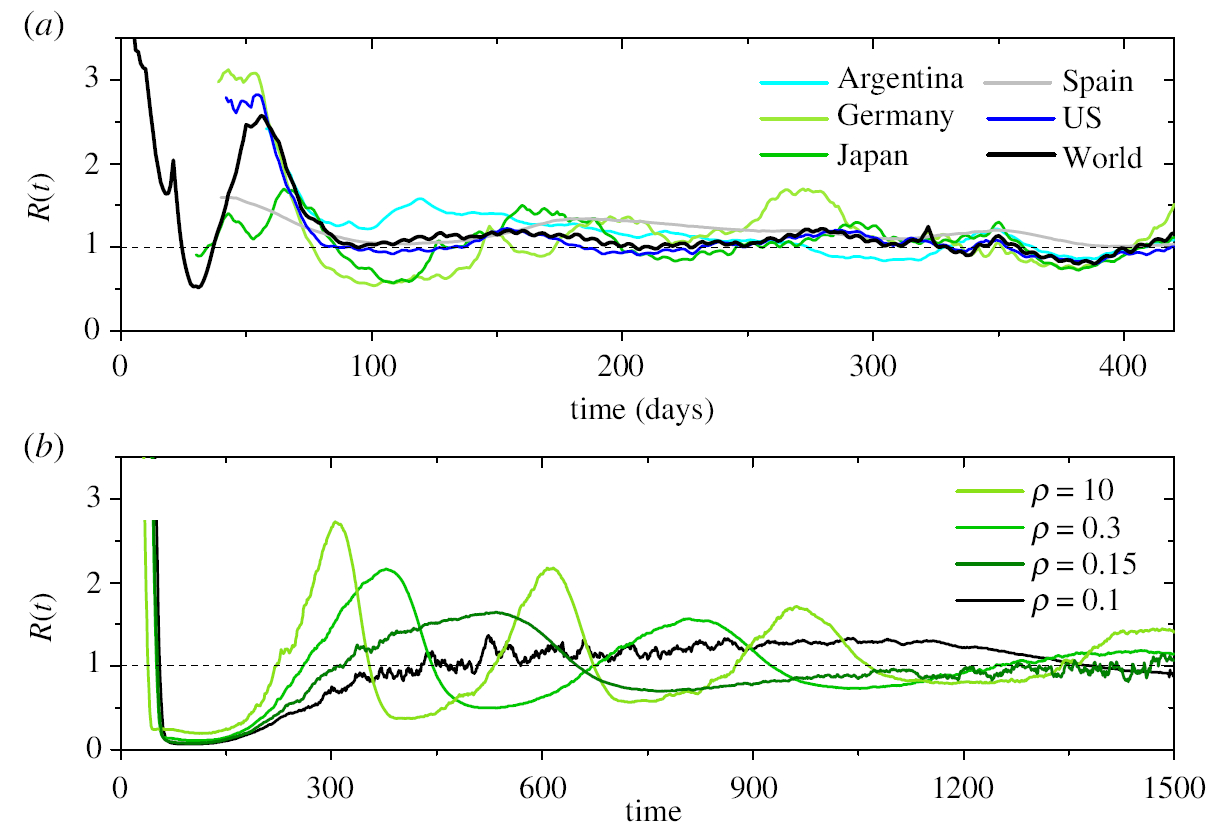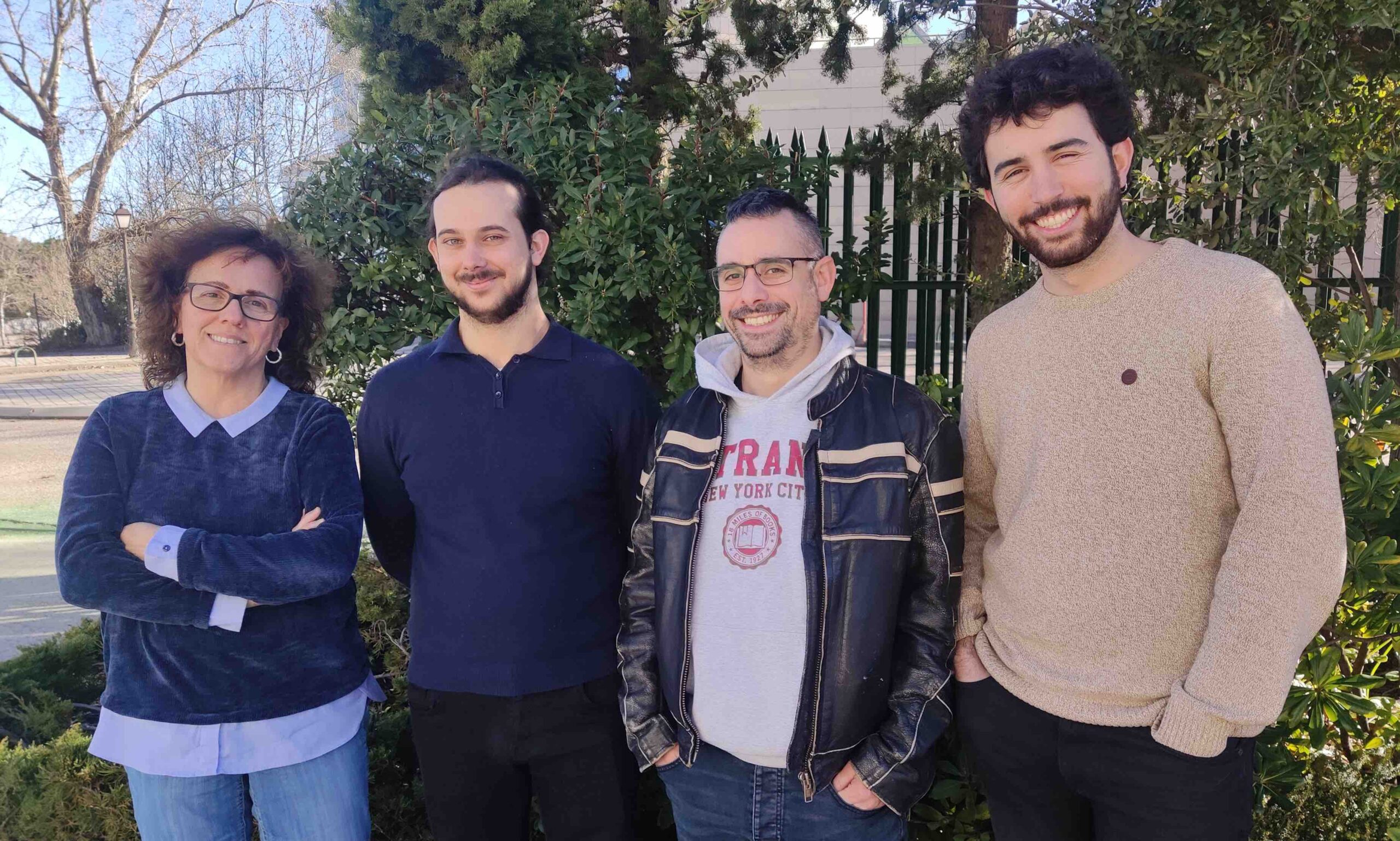Evolutionary Systems
RESEARCH GROUPS

Susana Manrubia
Group Leader
Contact
Research Summary
The main interest of our group is the theoretical study of evolutionary systems of different kinds. We develop models inspired by the phenomenology observed in natural systems, chiefly molecular populations, viruses, and interacting agents at the cellular level and up.
Research Lines
The main research topic of the group is the understanding, modelling and analysis of evolutionary mechanisms in biological and social systems. For almost two decades, we have investigated the adaptive dynamics of viruses and RNA populations and addressed broader problems, such as the relationship between genotype and phenotype (figure 1).

Figure 1. Illustration of phenotypic redundancy in a neutral nucleotide-to-amino-acid-sequence model. (A) The space of protein sequences of the same length is vast and contains a variety of functional sequences. (B) The number of codons representing each amino acid varies: codons coding for glycine (G), alanine (A), threonine (T), cysteine (C), arginine (R), glutamic acid (E), aspartic acid (D), and serine (S) are shown here explicitly as examples. (C) Possible nucleotide sequences coding for GATTACA (above) and REDRESS (below). From Villanueva et al., Biophysica 2022.
Recently, we have explored the topological structure that genotype-to-phenotype maps endow in sequence spaces, and its effects in the dynamics of heterogeneous molecular populations. We have uncovered some universal features of sequence spaces topology which are independent of the definition of phenotype and, therefore, have generic consequences for evolution and adaptation. Our results highlight the role of entropic effects in microscopic evolution: abundant, sufficiently functional phenotypes, are much more common in nature than highly adapted, but rare ones.
A full understanding of microscopic evolution is important to update current evolutionary theories and to derive useful effective models. In this sense, we question the role played by classical metaphors of evolution, and suggest that smooth fitness landscapes must be substituted by network-based representations. General evolutionary and adaptive processes affect multiple disciplines beyond biology.
Game theory, understood as the search for strategies that optimize fitness, can be applied to economic and other processes involving agents able to take decisions. In rigged economies, where market rules allow agents to artificially modify stock market prices, we have shown that economies increase in complexity: while growing economic complexity spontaneously defuses cartels, it also leads to large-fluctuations regimes that threaten the system’s stability.
In the context of epidemic propagation, we have shown that, even in the absence of non-pharmaceutical measures, epidemic waves and a convergence towards the critical propagation rate (figure 2) can originate from a self-adapting population behaviour, where individuals vary their degree of exposure according to their subjective perception of the external threat.

Figure 2. Effective reproduction number R0 as a function of time. (a) Empirical estimation of COVID-19 R0 for various countries and the World since 23 January 2020. (b) Evolution of R0 value for a model that incorporates the risk-aversion response of individuals to the pandemic state. The model generates epidemic waves and a value of R0 around 1, in agreement with natural progression (from Manrubia and Zanette, RSOS 2022).
Publications
Recent Publications
Villanueva A, Secaira-Morocho H, Seoane LF, Lázaro S, Manrubia S. Genotype-to-protein map and collective adaptation in a viral population. Biophysica 2022, 2, 381
Manrubia S. The simple emergence of complex molecular function. Philos Trans A Math Phys Eng Sci 2022, 380, 20200422
Manrubia S, Zanette DH. Individual risk-aversion responses tune epidemics to critical transmissibility (R=1). R Soc Open Sci 2022, 9, 211667
Manrubia S, Cuesta JA, Aguirre , Ahnert, SE, Altenber L, Cano A, Catalán P, Diaz-Uriarte R, Elena S F, García-Martín JA, Hogewe, P, Khatri BS, Krug J, Louis AA, Martin NS, Payne JL, Tarnowski J., Weiß M. From genotypes to organisms: State-of-the-art and perspectives of a cornerstone in evolutionary dynamics Physics of Life Reviews 2021; 38, 55-106
LF Seoane Games in rigged economies. Physical Review X 2021; 11, 031058
Castro M, Ares S, Cuesta J A, Manrubia S. The turning point and end of an expanding epidemic cannot be precisely forecast. Proceedings of the National Academy of Sciences USA 2020; 117, 26190-26196
Group Members
Group Leader
Susanna Manrubia
Senior Postdoctoral researcher
Luis F. Seoane
PhD candidates
Iker Atienza
Samuel Martínez-Alcalá

Funding



